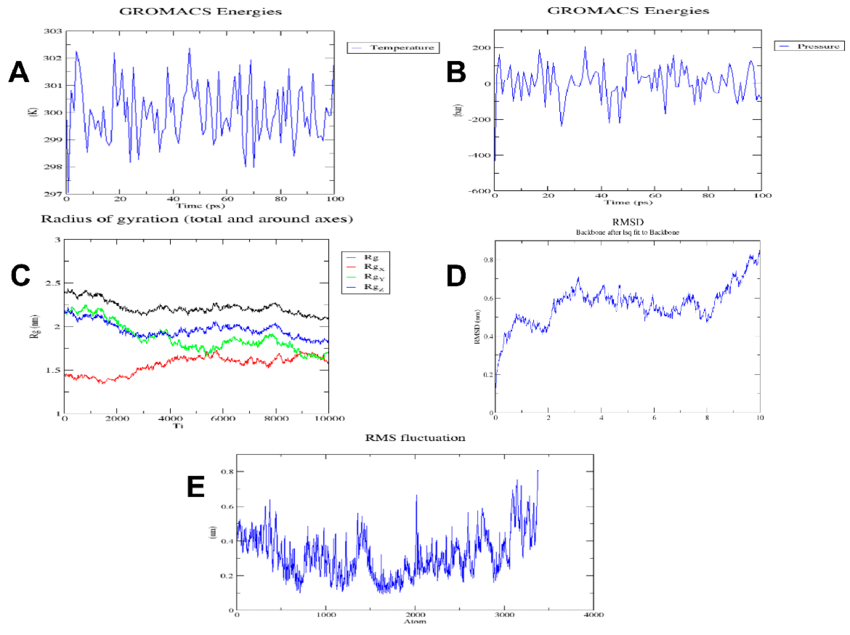Understanding molecular dynamics simulations
3 minute read
Hey there! Today, let’s talk about Molecular Dynamics (MD) simulation and how it can help us understand the behavior of complex molecular systems. MD simulation works by creating an initial configuration of a system, including the positions, velocities, and masses of all atoms or molecules. The simulation then calculates the forces acting on each particle based on their interactions with other particles in the system. These forces are used to update the positions and velocities of each particle over a small time step, typically in the femtosecond to picosecond range. The simulation is repeated for many time steps, allowing the system to evolve over time.
 |
|---|
| Figure 1: Example MD simulation output plots |
One of the coolest things about MD simulation is its ability to provide insights into the behavior of complex molecular systems that are difficult or impossible to study experimentally. For example, it can be used to study the behavior of proteins, which are crucial for many biological processes. By simulating the motion of individual atoms and molecules, researchers can gain insights into the structure and function of proteins, including how they interact with other molecules and how their structure changes over time.
MD simulation is also widely used in the field of materials science. It can model the behavior of polymers, ceramics, metals, and other materials, providing insight into their mechanical properties, stability, and behavior under different conditions. By simulating the behavior of materials at the atomic scale, researchers can develop a deeper understanding of how they behave and how they can be optimized for specific applications.
One of the strengths of MD simulation is its ability to model complex systems that have a large number of particles. Proteins, for example, are made up of thousands of atoms, making them difficult to study experimentally. However, by using MD simulation, researchers can study the behavior of these systems in detail, gaining insights into their structure, function, and behavior.
Another advantage of MD simulation is its ability to simulate systems under a wide range of conditions, including different temperatures, pressures, and chemical environments. This makes it a powerful tool for studying how systems behave under different conditions and how they respond to changes in their environment.
While MD simulation has its limitations, such as accurately modeling the interactions between particles and the computational cost, advances in computing technology have made it more accessible. Researchers are constantly developing new algorithms and techniques to improve the accuracy and efficiency of simulations.
So, what are some common visualizations used in MD simulations? Trajectories show the positions of particles in a system over time, energy plots show the total energy of a system over time, radial distribution functions measure how particles are distributed around a central particle, and density plots show the density of particles in a system as a function of position.
In conclusion, MD simulation is a powerful tool for studying the behavior of complex molecular systems, from proteins to materials. It has the potential to provide new insights into a wide range of scientific and technological applications, from drug design to energy storage. If you’re interested in learning more about MD simulation, be sure to check out the different types of simulations and visualizations used in the field.
